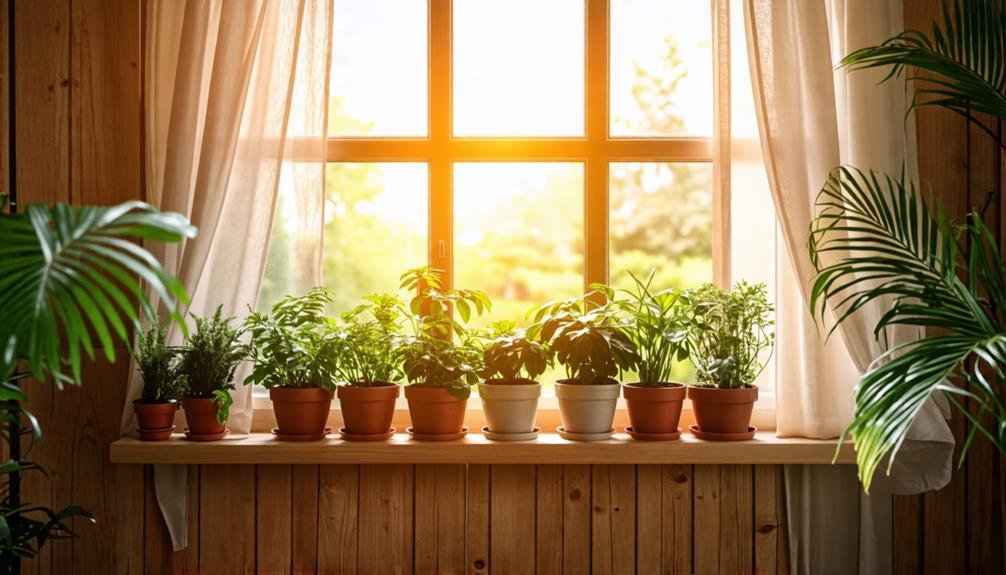The Eastern White Pine can indeed be messy for your yard due to several maintenance challenges. Its annual shedding of pine needles can create a significant cleanup burden, especially in the fall. Besides, the tree produces sap, which can lead to sticky situations on nearby surfaces. While these trees grow rapidly and have expansive canopies, their beauty may require you to invest time in regular raking and sap management. Strategic placement away from high-traffic areas can mitigate some messiness, making it crucial to weigh both aesthetics and maintenance needs carefully before planting. More insights follow on managing these challenges effectively.
Falling Pine Needles
Eastern white pine trees naturally shed older needles annually as part of their growth cycle. As these needles age, they typically change color to yellow or orange before falling to the ground. While this needle drop is a normal occurrence, it can create significant challenges, especially in areas prone to wildfires. The accumulation of these fallen needles poses a fire risk due to their flammability, particularly in dry conditions.
To reduce the dangers associated with falling pine needles, homeowners must prioritize regular cleanup. This practice not only enhances the visual appeal of the landscape but also minimizes fire hazards. It is advisable to avoid using fallen pine needles from Eastern white pines as mulch in gardens, particularly in wildfire-sensitive regions. Instead, consider safer mulching options, such as cedar chips or bark, that maintain your yard's attractiveness without increasing fire risks.
Adopting effective landscaping strategies, such as creating defensible space around buildings and routinely raking fallen needles, will enhance both safety and the overall aesthetics of your property. By understanding the implications of falling pine needles, homeowners can appreciate the beauty of Eastern white pines while effectively managing potential hazards.
Dripping Pine Tree Sap
Eastern white pine trees produce pine resin, especially noticeable in spring when growth is vigorous. This natural substance serves as a defense for the tree but can create messes in residential yards if not addressed. Dripping resin may occur due to injuries or pest infestations, resulting in sticky spots that can cling to cars, clothing, or outdoor furniture.
The resin can harden quickly, complicating removal and requiring consistent upkeep. Homeowners should note that while Eastern white pines grow rapidly, their resin output can create challenges in busy yard areas.
Additionally, significant resin leakage may signal health problems within the tree, warranting further examination. Although planting an Eastern white pine offers aesthetic and ecological advantages, the potential for resin-related messes should be considered in landscaping choices. Understanding these factors helps homeowners appreciate the elegance of the Eastern white pine while effectively managing its distinctive traits.
Recommended Planting Conditions

Eastern white pine trees thrive in a variety of conditions, making them adaptable for many landscapes. They prefer full sun to partial shade and can thrive in both alkaline and acidic soils, allowing for flexibility in planting. However, careful consideration of the location is crucial, as potential litter problems and the tree's mature size may impact nearby areas.
Ideal Sun Exposure
Eastern white pine trees thrive in environments that provide full sun and partial shade, essential for their healthy growth and development. These towering conifers flourish when they receive a minimum of six hours of direct sunlight each day. Under full sun conditions, Eastern white pines demonstrate vigorous growth, resulting in their remarkable height and expansive spread. While they can withstand partial shade, their growth may be less vigorous in such settings.
When determining planting sites, it is crucial to evaluate how sunlight interacts with your yard's landscape throughout the day. Areas shaded by structures or other trees can impede the tree's growth potential. Ensuring adequate sun exposure is key to preventing health issues and promoting lush foliage.
Soil Preferences
Eastern white pine trees thrive in varied soil types, capable of adapting to both basic and acidic compositions. This flexibility makes them suitable for diverse gardening projects. Optimal soil conditions include well-drained landscapes to avoid water accumulation, as these trees prefer drier environments.
Moderately fertile soil suffices for Eastern white pines, allowing them to prosper even in less-than-ideal conditions. When choosing a planting location, it's crucial to assess drainage and soil pH levels, as both factors significantly influence the tree's vitality and growth.
Eastern white pines flourish in USDA hardiness zones 3 through 7, highlighting their adaptability across various climates. Whether you desire a striking specimen tree or a natural windbreak, recognizing these soil preferences will enable you to nurture a robust Eastern white pine, enhancing your yard's aesthetic and ecological value with minimal upkeep.
Location Considerations
Choosing the right spot for planting Eastern white pine trees is essential for their healthy growth. These conifers thrive in sunny to partially shaded areas and need well-drained soil to prosper. They are adaptable to USDA hardiness zones 3 through 7, making them suitable for various climates. When selecting a planting site, pay attention to the soil's pH; Eastern white pines can tolerate both alkaline and acidic environments, providing flexibility in your landscaping.
Consider the potential for litter issues, such as fallen needles that may accumulate and necessitate regular upkeep. While these trees can enhance the visual appeal of your garden, their needle drop might require careful placement, avoiding high-traffic zones or patios.
Additionally, ensure you have ample space for growth, as Eastern white pines can reach heights of up to 80 feet and spread as wide as 40 feet. By thoughtfully analyzing these considerations, you can establish a perfect setting for your Eastern white pines, harmonizing aesthetics with practical needs, and ultimately fostering a vibrant yard with these impressive trees.
Tree Maintenance Challenges
Maintaining eastern white pine trees involves several challenges for homeowners. The labor-intensive task of cleaning up fallen pine needles is a significant concern. Each autumn, older needles drop, creating a thick layer that requires regular raking to prevent suffocation of the grass beneath. Yellow or orange pine needles indicate they have reached the end of their life cycle, necessitating timely removal to preserve the lawn's appearance and health.
Sap is another issue, as it seeps from the tree throughout the year, becoming particularly noticeable in spring. This sticky substance can quickly harden on vehicles, clothing, and even pets, making removal a cumbersome task that often requires specific solvents or careful scraping. Regular pruning, essential for maintaining tree health, may also lead to sap bleeding, which could signal underlying health concerns if excessive.
These maintenance challenges can be overwhelming, especially in regions susceptible to wildfires, where fallen needles significantly increase fire risk. Therefore, before planting eastern white pines, potential tree owners should carefully consider the labor involved against their desire for the natural beauty these majestic trees offer.
Tree Characteristics and Growth Rate

Eastern white pine trees, known for their towering stature, can reach heights of up to 80 feet and boast expansive canopies that can spread to 40 feet wide, making them an eye-catching element in any garden. These evergreen conifers exhibit rapid growth rates, often adding as much as 54 inches annually once they mature between 8 to 10 years. Their versatility allows them to thrive in a variety of settings, flourishing in USDA hardiness zones 3 through 7 and adapting well to both alkaline and acidic soil types.
These pines retain their lush green needles year-round, ensuring continuous visual appeal. However, potential gardeners should consider the tree's considerable size and growth speed prior to planting, as these factors can substantially influence yard design and maintenance. The annual shedding of needles is a natural occurrence, contributing to garden litter that may necessitate routine upkeep. Ultimately, comprehending the traits and growth habits of eastern white pines will assist in making a well-informed choice about their incorporation into your landscape, achieving a balance between aesthetic charm and practical requirements.
Balancing Aesthetics and Cleanup
Eastern white pines enhance landscape beauty with their striking appearance and rapid growth. However, maintaining them can be challenging for homeowners. The annual shedding of older needles, which may turn yellow or orange, creates a visually appealing layer but requires regular cleanup. In wildfire-prone areas, this needle accumulation can increase fire risks, making it crucial to keep the surroundings clear.
Moreover, the sap from eastern white pines, particularly in spring, can create sticky situations. It clings to surfaces like cars and patio furniture, hardening quickly and complicating cleanup. Homeowners must prepare for labor-intensive cleaning tasks that accompany the tree's natural allure.
To enjoy the beauty of these majestic trees without overwhelming maintenance, consider planting them away from busy areas. Regular upkeep can enhance your enjoyment of the outdoors, allowing you to appreciate the elegance of eastern white pines while keeping your space tidy and tranquil.



















You must be logged in to post a comment Login